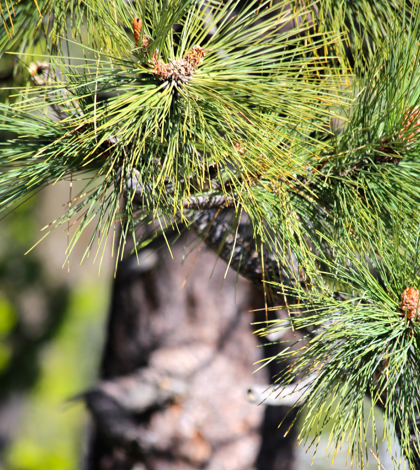The effects of California’s four-plus year drought are all around us – brown lawns, dried-up plants, residences with new desert-scape yards — and now dead and collapsing pine trees, oaks and tanoaks. Whereas Californians were willing to practice conservation and have even voluntarily made significant changes in how they use water, downed and dead pines on forest floors, and oaks and tanoaks weakened by drought are succumbing to disease, and may change the Golden State’s landscape for years to come.
Elected officials, including Governor Jerry Brown, are keenly aware of the problem. In October Gov. Brown declared a state of emergency due to public safety hazards from falling trees and a potential for worsening wildfire risks. Legislators from throughout federal, state and local jurisdictions established a Tree Mortality Task Force, chaired by Ken Pimlott, director of Cal Fire, California’s forestry and fire-protection agency.
As California’s top-ranking forester Pimlott has indicated that some areas of the Sierra Nevada’s central and southern forests face harsh statistics. Pimlott says that, “Eighty percent of trees are dead. There will be no conifers (there) when this is done.”
In addition to the already 70 million-plus dead trees, more than 50 million other trees, starving for water for more than four years, are in peril. In the Sierra National Forest upwards of 90 percent of mid-elevation ponderosa pines are dead. Pines along Cascade, Sierra and coastal foothills are described as, “gray as ghosts” by the High Country News. Worse yet is that is the statement by David Rizzo, a plant pathologist at UC, Davis – “The unfortunate thing is that the worst is yet to come.”
Rizzo and other scientists are hurriedly studying the problem.
Whereas pines and other related conifers evolved alongside invasive insects, when the drought eventually ends, pine trees will most likely return. But the pines also face another risk factor – bark beetles. Pine trees weakened by the drought are now facing bark beetle infestations, an invasion they may not be strong enough to withstand. Bark beetles were previously referred to as a natural part of the forest but today, with a reproduction rate triple the normal rate, bark beetles are something akin to locusts in days of yore.
Though less understood, sudden oak death is primarily a water-borne disease manifested by a mold on a host plant, oftentimes a California bay laurel tree, rhododendrons, rose bushes and others. Spores drop from the host plant’s leaves, furthered by rain and wind, and infect neighboring oaks and tanoaks. But it can be years before oaks show any signs of the disease and the trees have no inherent defense systems to ward off the mold. However, the good news is that not all infected oaks or tanoaks succumb to the infection.
So, what to do with all the state’s dead and dying trees?
Authorities are divided on the fire risk of the deceased timber. Conventional wisdom claims that the downed and diseased trees are highly flammable at a point in time when California is already dealing with increased fires. However, some scientists say our changing climate increases the fire threat, not the dead trees.
Slopes denuded of trees can cause a loss of critically-needed watersheds, advance soil erosion and give way to dangerous landslides. The on-going drought and the subsequently tree death can markedly alter the forests ability to absorb carbon dioxide, a greenhouse gas. Worse yet is “black carbon” an emission and pollutant from burning trees hundreds, even thousands of times worse than any other greenhouse gas.
The problems continue to worsen as California’s drought lengthens. Cal Fire’s Pimlott accurately sums it up saying, “We’ve never experienced a change and impact at this scale. We are literally one spark away from catastrophic fire in these tree mortality areas.”
 California Water News Daily Your Source For Water News in California
California Water News Daily Your Source For Water News in California


